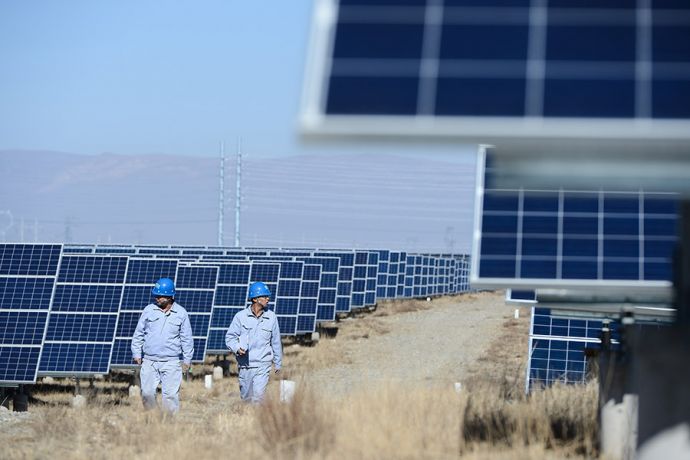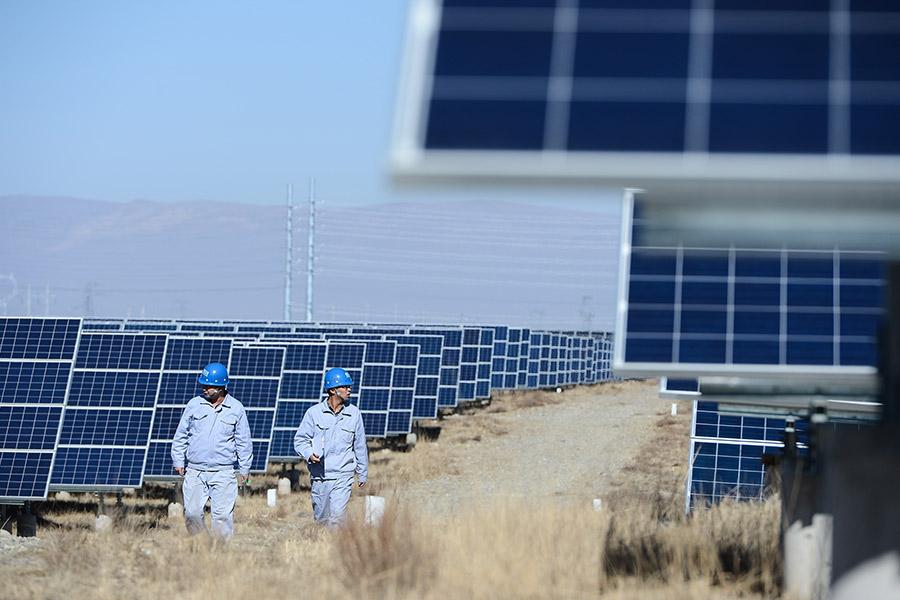
BEIJING -- A 100 megawatt solar power project in Qinghai province designed to combat poverty is forecast to generate 25 million yuan ($3.66 million) a year after its commissioning on June 30.
Wei Boping, head of the Qinghai Poverty Alleviation and Development Bureau, said the project in Gonghe county, Hainan Tibetan autonomous prefecture, is among the most efficient in China.
Poor-quality materials and low power efficiency often mar such projects.
The power efficiency of the Qinghai project, however, is much higher than average, generating not only enough electricity for household consumption, but also extra power to sell back into the grid.
LONGi Solar, a Chinese solar energy company, provided the high-efficiency mono-crystalline modules for the project. According to Tang Xuhui, deputy head of LONGi Solar, many photovoltaic poverty relief projects in China see poor, uneven quality and power efficiency of less than 17 percent.
"Under such circumstances, it's challenging to remain profitable, let alone to lift locals out of poverty," he said.
Qinghai is the origin of China's three most famous rivers: the Yellow River, the Yangtze River and the Lancang River, the local name for the upper reaches of the Mekong River. The province, with a population of 5.8 million, has abundant solar power resources.
It is estimated that 396,000 residents are currently living under the poverty line, mostly in the semi-arid mountainous and alpine regions in the south, which has a fragile ecosystem.
With the advantage of its abundant solar resources, the province can harness that energy via photovoltaics, Wei said. With comparatively smaller upfront investments and steady returns, solar-powered poverty relief makes for effective and sustainable programs that meet Qinghai's challenges in combating poverty, he said.
China aims to lift 70 million people above the poverty line by 2020. The central government introduced a national database to analyze the number of people living in poverty after the announcement of the 2020 target. It is formulated to help precise project planning and to allocate cash resources more effectively.
Poverty alleviation is an important task in China's 13th Five-Year Plan (2016-20). President Xi Jinping stressed that measures to alleviate poverty must be precise to benefit the needs of households and individuals.
Joseph Jacobelli, a senior analyst of Asian utilities at Bloomberg, said while it will be a challenge for China to eradicate poverty nationwide by 2020, this will most likely be achieved in areas with high irradiance such as Gansu and Qinghai provinces. (Source: China Daily)




 A single purchase
A single purchase









